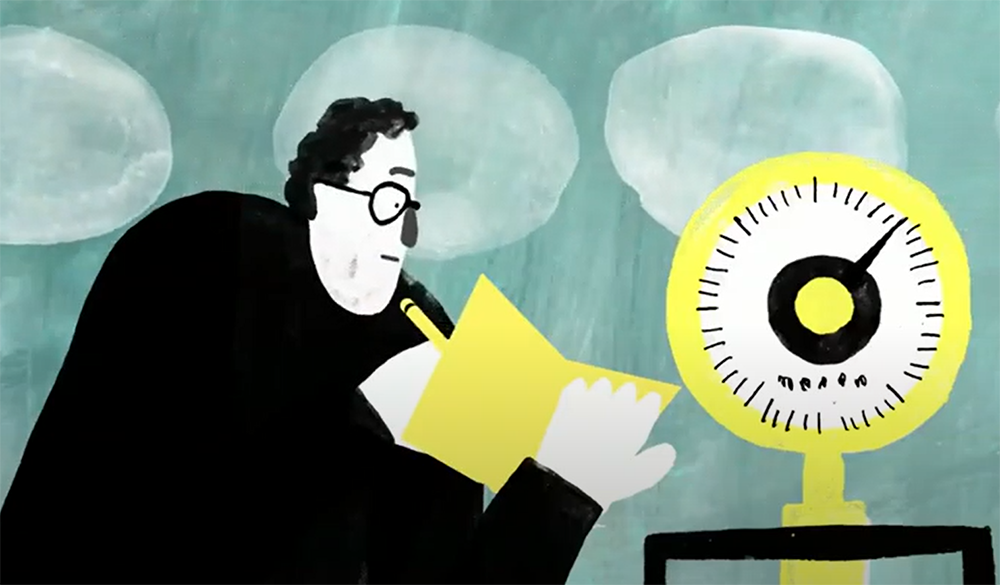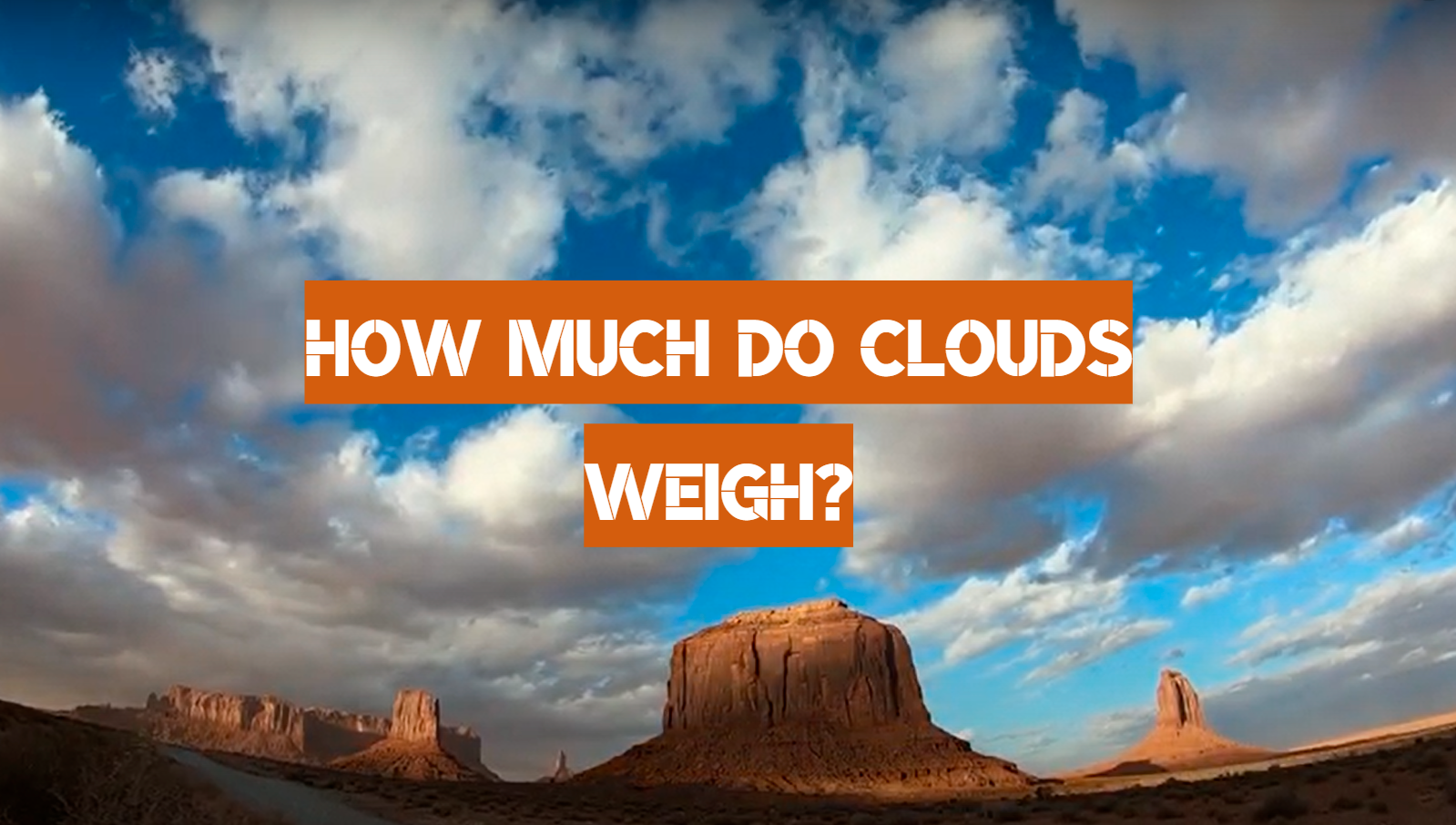Table of Contents
How Much Do Clouds Weigh: Everything You Need to Know
What is the weight of a cloud? Believe it or not, this is a question that people actually want to know the answer to! In this article, we’ll cover everything you need to know about clouds and their weight. We will discuss common questions and share some useful tips on how to measure the weight of a cloud. So, whether you are a student who needs help for a science project or simply curious about clouds, read on for information that will answer all your questions!
What Are Clouds?
Clouds consist of numerous tiny water droplets or ice crystals. They form when warm air rises. The warm air rises and cools down. This causes the water vapor to condense into tiny droplets or ice.
The type of cloud you see depends on the temperature and amount of moisture in the air. Low-lying clouds are usually warmer because they are closer to the ground, while high-altitude clouds are colder because they are higher up in the atmosphere. Clouds, like everything else in the world, have a shape and size. The most frequent kinds of clouds include cirrus, cumulus, stratus, and nimbus.

Cirrus clouds are thin and light and are usually high in the sky. They generally indicate fair weather.
For instance, cumulus clouds are low-lying, fluffy clouds similar to cotton balls. They often form before it rains or snows.
Stratus clouds are low, gray, and uniform in color. They can sometimes cover the entire sky and cause light rain or snowfall.
Nimbus clouds are dark and heavy, and often bring thunderstorms or other severe weather conditions.
Clouds keep the planet from heating up too much during the day and freezing over at night. They also play a role in precipitation, by releasing the water droplets or ice that make up rain or snow.
Water and air
Water and air are two of the most important ingredients in making a cloud. The amount of water vapor is determined by its temperature. When the heated air rises, it grows and cools.
Clouds are very important to our planet. They help regulate the Earth’s temperature by reflecting sunlight and trapping heat. They also contribute to the water cycle by assisting in the formation of rain.
Without clouds, life on Earth would be very different!
How big? How dense?
Clouds are composed of tiny water droplets or ice crystals. The size, shape, and number of these particles determine a cloud’s type. For example, cumulus clouds look like big puffy balls, while cirrus clouds are thin and light.
The average cloud is about the same size as a small car. But don’t let their size fool you — clouds can be very heavy! The weight of a cloud depends on how much water it is holding. A typical cumulus cloud can weigh the same as 80 elephants! [1]

The Consistency of Clouds
Clouds consist of millions of water droplets, but they may contain trillions of them. When these droplets come together, they create a cloud. The size and shape of clouds depend on a variety of factors, including wind speed, humidity, and temperature.
Two main types of clouds are cumuliform and stratiform. Cumuliform clouds are billowy and often associated with fair weather. Stratiform clouds are flatter and usually indicate precipitation is on the way.
Most clouds you see in the sky are actually a mix of both cumuliform and stratiform elements. And while we often think of them as being white, clouds can actually be many different colors.
Because the droplets are tiny, clouds are generally white. When the sun shines on them, they distribute light in all directions equally. But when clouds contain larger droplets, they can take on different colors.
For example, red and orange clouds often indicate a sunset or sunrise. And gray or black clouds usually mean rain or thunderstorms are coming.
Earth’s cloud cover has remained relatively stable over the past few decades, but there is evidence that some types of clouds are changing as the planet warms. For example, stratocumulus clouds are becoming thinner and more broken up. And cirrus clouds are appearing more often and lasting longer.
How to Get the Exact Weight of a Cloud
The only way to do this is by using a very sensitive balance. The problem with this method is that the amount of water vapor in the air can change quickly, so the balance would have to be checked often. Also, the cloud might move and cause the balance to be inaccurate.

Another method to find it out is by looking at how much rain it produces. For example, if a cloud produced one inch of rain over an area that was one square mile, then we could estimate that the cloud weighed about 0.0023 pounds. This method isn’t perfect either because different types of clouds can produce different amounts of rain.
So, while we can’t get an exact number, we can make some pretty good estimates of how much a cloud weighs.
Approximately, cumulus clouds (the kind that looks like puffy, white cotton balls) weigh around 500 million pounds. That’s a lot! But don’t worry, they’re not going to fall out of the sky and crush you. These types of clouds are held up by warm air rising from the ground.
Stratus clouds (the kind that looks like long, flat sheets) are much lighter because they contain less water vapor. They can weigh as little as 50 million pounds.
Cirrus clouds (the ones that look like wispy streaks in the sky) are made of ice crystals and can weigh even less than stratus clouds.
Now that you know how much a cloud weighs, you might be wondering how they can hold all that water (or ice) up in the sky. The answer has to do with air pressure.
As air rises, it expands and becomes less dense than the air around it. This causes a low-pressure area to form, which helps to hold the cloud up. So, even though clouds are very heavy, they can still float in the sky thanks to this low pressure. [3]
How to Find the Weight of a Cloud
The weight of a cloud can be found by using a device called a hygrometer. This instrument measures the amount of water vapor in the air and gives an estimate of the cloud’s weight. A hygrometer is required to measure humidity levels. You’ll need to check the readings at various heights above the ground. The higher the reading, the heavier the cloud.
Also you can take its temperature. Warm clouds are usually heavier than cold clouds because they contain more water vapor. To find the temperature of a cloud, you will need to use a thermometer. Take readings at different heights above the ground. The higher the reading, the warmer the cloud and the heavier it is likely to be.

You can also estimate the weight of a cloud by its size. You will need to use a ruler or measuring tape to find the size of a cloud. Take measurements at different heights above the ground. The larger the cloud, the heavier it is likely to be.
Now that you know how to find the weight of a cloud, you can use this information to help you predict the weather. If you see a heavy cloud, it is likely that rain is on its way. If you see a light cloud, it is likely that the weather will be fair.
Please note that these methods are only estimates and the actual weight of a cloud can vary depending on its conditions.
What Weighs as Much as a Cloud
A lot of things, actually. The world’s biggest cloud weighs as much as 500 million tons. That’s the same as:
- 125,000 blue whales
- 50,000 African elephants
- 25,000 Eiffel Towers
- or the weight of all the humans on Earth combined!
The largest ever recorded cloud was over Mexico City in 2010 and it weighed an estimated 700 million tons.
Incredible, huh? But how can something so big and fluffy weigh so much?
In fact, an average cumulus cloud (the kind you see on a bright, sunny day) weighs about as much as 80 elephants. A thundercloud can weigh even more—as much as 400 elephants!
So the next time you look up at the sky and see some puffy clouds, just remember: They might look light and airy, but they’re actually really heavy!
Why Clouds Don’t Fall
Have you ever looked up at the sky and wondered how clouds stay afloat? Surely, something as large and fluffy as a cloud must weigh quite a bit, so how do they manage to stay suspended in the air?
It turns out that the answer to this question is rather complicated. In order to understand why clouds don’t fall, we need to first take a look at what exactly a cloud is.
The droplets in clouds are so small that they can stay suspended in the air, which is why we can see them floating in the sky. However, even though they are very light, they still have mass and therefore weight. So how do they manage to stay up there?

The answer has to do with something called “air pressure”. Air pressure is created by the force of the earth’s gravity pulling down on the air. The more air there is above us, the more pressure it exerts on the air below it. This is what keeps clouds from falling out of the sky.
The amount of air pressure that a cloud experiences depends on its altitude. The higher up a cloud is, the less air pressure it experiences. This is why clouds often look like they’re floating on top of the mountains – they are! [4]
Of course, even though clouds are very light, they can still get heavy if there are enough water droplets or ice crystals in them. When this happens, the cloud will start to fall from the sky. This is why we see rain or snow falling from the clouds.
So now you know how much do clouds weigh and why they don’t fall out of the sky! Next time you look up at the clouds, you’ll know just how amazing they really are.
FAQ
How much does an average size cloud weigh?
The average cumulus cloud, which is your typical “fluffy” cloud, weighs around 1.1 million pounds (500 000 kilograms). [5]
That’s the same as about 80 African elephants!
How much does the biggest cloud weigh?
A giant thunderstorm cloud can weigh close to 16 trillion pounds (73 billion kg), which is the weight of about 3364 blue whales.
The biggest Cumulonimbus clouds can get as large as 12 miles (20 kilometers) tall and 45 miles (70 km) wide. These giants are called Supercells.
The small ones are about the size of a small car.
The biggest ones can be as large as 30 miles (50 kilometers) across, which is about the size of the state of Connecticut!
Clouds are mostly water vapor, but they also contain tiny droplets of liquid water and ice crystals. The amount of water vapor in a cloud depends on how much moisture is in the air around it. When warm air rises and cools off, it can’t hold all that moisture anymore and some of it condenses into tiny droplets to form clouds. The same thing happens when cold air moves over warm water.
How do clouds float if they weigh so much?
he answer has to do with the way that air pressure works. The air around us has weight, but it also exerts pressure. That pressure is what helps keep our atmosphere in place and prevents it from collapsing in on itself. When the atmospheric pressure is too high, it can push down on objects and make them weigh less than they actually do. That’s why you feel lighter when you go up into the mountains – the air pressure is lower at higher altitudes, so your body doesn’t have to work as hard to counterbalance the atmospheric pressure.
Clouds are made up of tiny water droplets, and those droplets are constantly moving around. As they move, they bump into other drops and create a kind of “fluffiness” that makes the clouds look like they’re floating on air. But in reality, they’re just being buoyed up by the pressure of the atmosphere.
What is the heaviest cloud?
The heaviest cloud recorded weighed in at about 13.35 million pounds, according to the Guinness World Records. The cloud was made up of water droplets and ice crystals, and it was about 0.75 miles wide.
So, how does a cloud get so heavy? It all has to do with the individual water droplets that make up the cloud. Each droplet is incredibly small, but when you have billions of them together, they can add up to a lot of weight.
Water vapor condenses around particles in the air. As more water vapor condenses onto these particles, they become heavier and eventually fall out of the sky as rain or snow. But before they reach the ground, they might join together to form a cloud.
Smaller droplets are lighter and can be easily blown around by the wind. But as they grow larger, they become heavier and more likely to fall out of the sky.
How much does a piece of cloud weigh?
The answer to this question is a little complicated because there’s no definitive answer. The weight of cloud droplets can vary greatly. The weight of the cloud is also determined by the size of the droplet.
In general, however, it is estimated that a cumulus cloud (the kind that looks like a giant cotton ball) can weigh anywhere from about 200 million pounds to one billion pounds! That’s pretty incredible when you think about it.
Useful Video: How much do the clouds WEIGH exactly ??|Learn’A’Holic|
Conclusion
Now that we know how much water is in a cloud, and how much water vapor weighs, we can easily calculate the weight of a cloud. So, one last time: How much do clouds weigh? The answer is…a lot! Clouds can weigh anywhere from a few hundred kilograms to several million kilograms. That’s a lot of weight for something that looks so fluffy and light!
Thanks for reading!
References:
- https://theconversation.com/curious-kids-how-much-does-a-cloud-weigh-143215
- https://www.thoughtco.com/how-much-does-a-cloud-weigh-p2-607590
- https://www.thomasnet.com/insights/how-much-does-a-cloud-weigh/
- https://sciencenotes.org/how-much-does-a-cloud-weigh/
- https://www.sciencealert.com/this-is-how-much-a-cloud-weighs






Leave a Reply